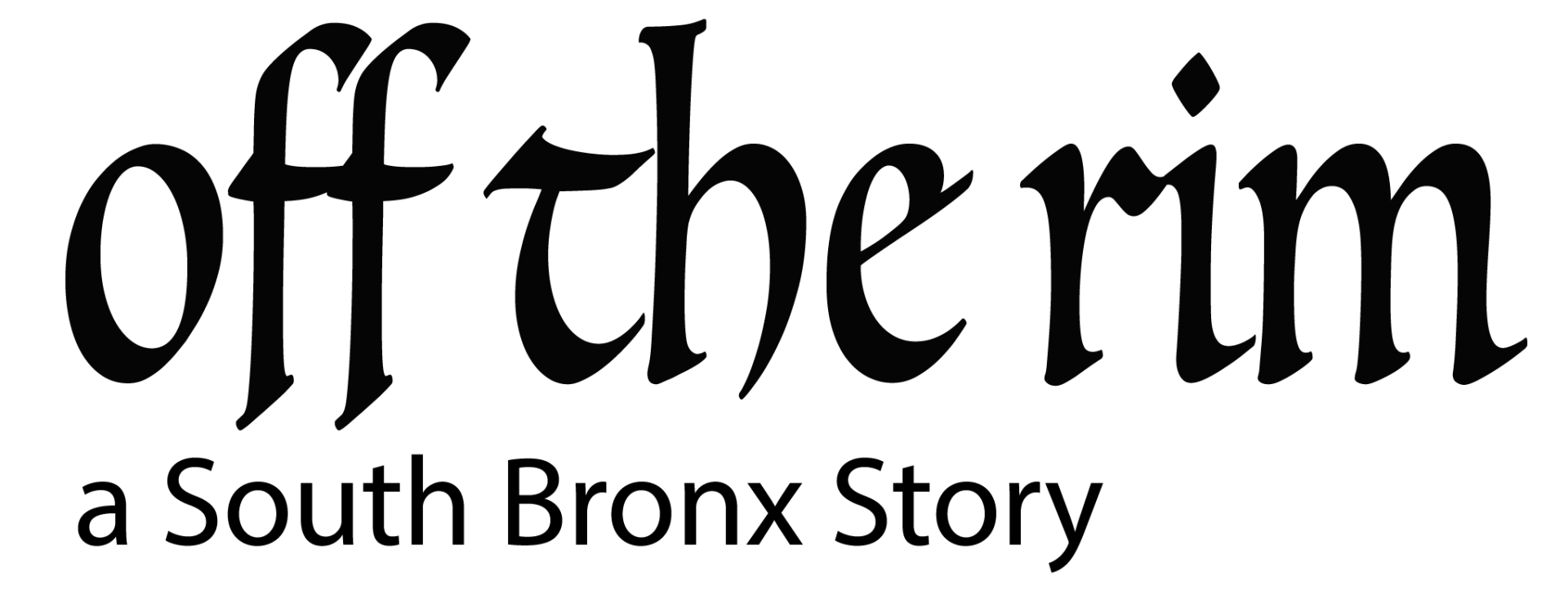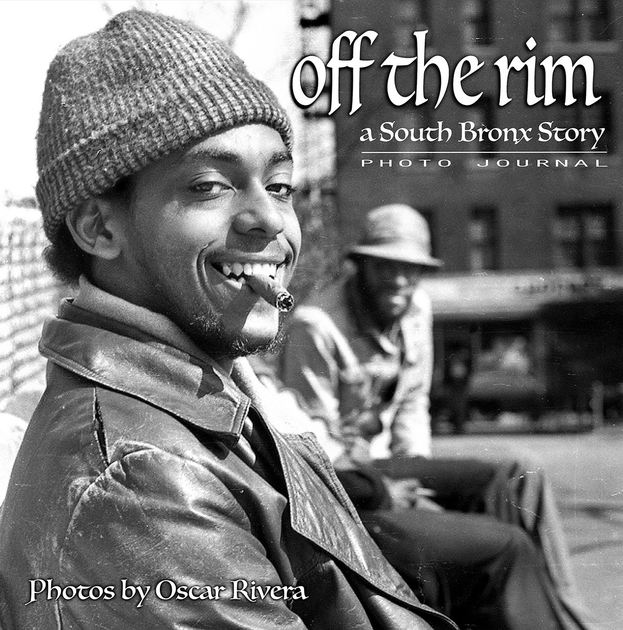The untold true story.
Off The Rim chronicles life in the South Bronx during the '70s with rare photos and text that capture the hopes, humor and hustle that shaped many inner-city youths. Inspiring reading for today's city bound youth.
Softcover 10" x 10" book.
102 pages. B/W photos
$19.95 plus $9.45 shipping and handling
Haven’t read the book?
Read this review.
It will blow you away.
Reviewed by Dr. Steven Payne
The Bronx Historical Society
-
Few reviews capture the spirit of a book like this one.
Off the Rim: A South Bronx Story offers a mesmerizing collection of Oscar Rivera’s photographs, shot mostly on 35mm black and white film. These photographs document Oscar’s teenage years and young adulthood in the neighborhood around Mill Brook Houses in the Mott Haven section of The Bronx during the 1970s and 1980s. The photographs come from a time and place in Bronx history widely associated, even now, with poverty, urban desolation, and despair. Unfortunately, “the Bronx is burning” still holds the popular imagination captive. But there are clear signs that the iron grip of this cliché is weakening. Over the last two decades especially, a growing litany of books, documentaries, museum exhibits, oral history projects, and works of art have challenged key portions of this trite narrative. There is no doubt that widespread housing deterioration and arson caused immense suffering in the most heavily affected portions of The Bronx during the 1970s and 1980s. However, thanks to the collective historical work of numerous Bronx community members, artists, activists, documentarians, and historians, we are beginning to get a clearer picture of the nearly miraculous ways that Bronxites survived and fought back against the inhumane policies and practices of slumlords, elected officials, and public administrators. Indeed, the primarily working-class Black and Puerto Rican residents of the South Bronx retained tremendous tenacity and agency during this period, even in the worst of years and on the most ravaged blocks.
A top-to-bottom rewrite of the story of the 1970s and 1980s South Bronx, nevertheless, still faces roadblocks, the most serious being that of the staying power of images. Oral histories and freshly unearthed documents, invaluable in and of themselves, only go so far in mitigating decades of sensationalized, pornographic, racist, condescending, and otherwise dehumanizing media portrayals of the South Bronx. Revealingly, an inordinate number of these portrayals centered on the same two or three most heavily destroyed and depopulated blocks on Charlotte Street and Fox Street. The beguiling enchantment placed on viewers by these images obscures their incredibly narrow perspective. The spell pulls us in, and no matter the overwhelming amount of personal and historical evidence to the contrary, we often still cannot shake the persistent impression that all of The Bronx, and especially the South Bronx, was, or must have been, this way and this way only.
Oscar’s newly released photo journal is one of the most effective antidotes to this decades-old media sorcery, not least because Oscar does not have to rely on the myopic gaze of readily available archival footage of the 1970s and 1980s South Bronx. Oscar has his own archival sources, produced by himself in the moment. He was there, after all. Oscar’s recollection of his artistic perspective is likewise telling: “Though all the burning and bombed out buildings in my neighborhood looked scary and enticing, I preferred people to buildings. People was what I wanted to shoot. Their faces full of so much emotion exited me” (p. 26). The arson and housing abandonment were there in Oscar’s neighborhood, too, as in other parts of the South Bronx. He simply cared more about preserving the overflowing humanity all around him, raw and unfiltered. Thus, from cover to cover Off the Rim tells an irresistible counter-narrative of a 1970s and 1980s South Bronx teeming with life, fun, creativity, and community. His intimate photographs and hilarious, disarming prose make readers feel like they have just come away from a reunion with lifetime friends. That, indeed, is what Off the Rim is: a dazzling love letter written from Oscar to his Bronx neighborhood and the friends he grew up with, some of whom have passed on but most of whom are still very much alive.
The last portion of Off the Rim contains a guest essay on the South Bronx Football Conference, written by one of Oscar’s late friends, Jamie “Jinx” Emeric. This historical essay only tightens the compelling tapestry that Oscar has woven through photographs and prose in the previous parts of the photo journal. With the aid of Oscar’s striking photographs, Jinx tells the incredible story of how an enterprising bunch of South Bronx teenagers and young adults created a semi-pro football league—complete with uniforms, a full season lineup, and a Super Bowl— entirely on their own. This was in the 1970s no less, precisely when city-sponsored after-school programs and similar public investments beneficial to working-class folks were being gutted. Again, as the entirety of Off the Rim insists: the people of the 1970s and 1980s South Bronx did not simply sit back and wait for someone else to save them from the potent death concoction of short-sighted greed, political complicity, and racist public policies. They rose up and resisted, and perhaps one of the most extraordinary ways they did so was by continuing to find joy in life and each other.
Dr. Steven Payne, The Bronx County Historical Society
-
A grateful and excited book owner.
Hey oscar! This is Jillian, from Mottley Kitchen.
I want to first of all thank you for giving me this photo journal!
We finally took a moment to look at it with intent, and let me tell you, I did not expect to have an hour fly by so quickly. These photos are timeless, but additionally the story telling is so authentic. My husband is born in DR and raised in the Bronx, and I always felt his stories could take me back in time. And now, this is taking me a little further back, but almost like I’m really there. I can almost smell it.
I’m also glad that I’m still only a few pages in, which means I still have a lot left to enjoy! I’m currently at the end of meeting La China. How you walked to 86th… that’s one of my husband and my favorite walks. Because you walk through the salsa music of the Bronx, to the hip hop of Harlem (and a mix of now Banda from the Mexicans that have been moving in), Arab music around the 90s, until we get to 86th where we are quickly reminded that we are NEVER leaving the Bronx. Lol.
We are both just taken back with this book and I feel so grateful to have crossed paths with you at the cafe.
I’m planning on purchasing some of those books tomorrow, and giving them to some of my family members. I just know they will enjoy it as much as I did.




